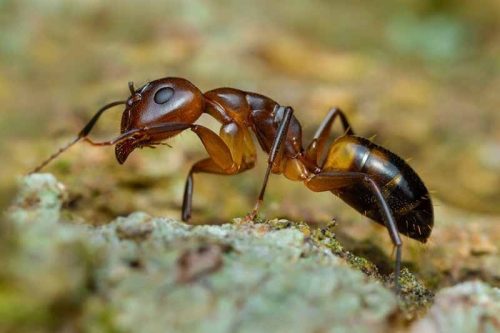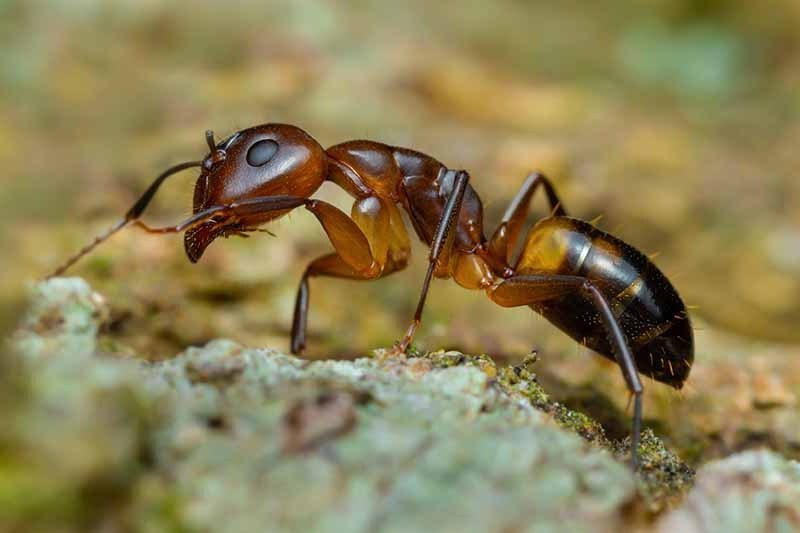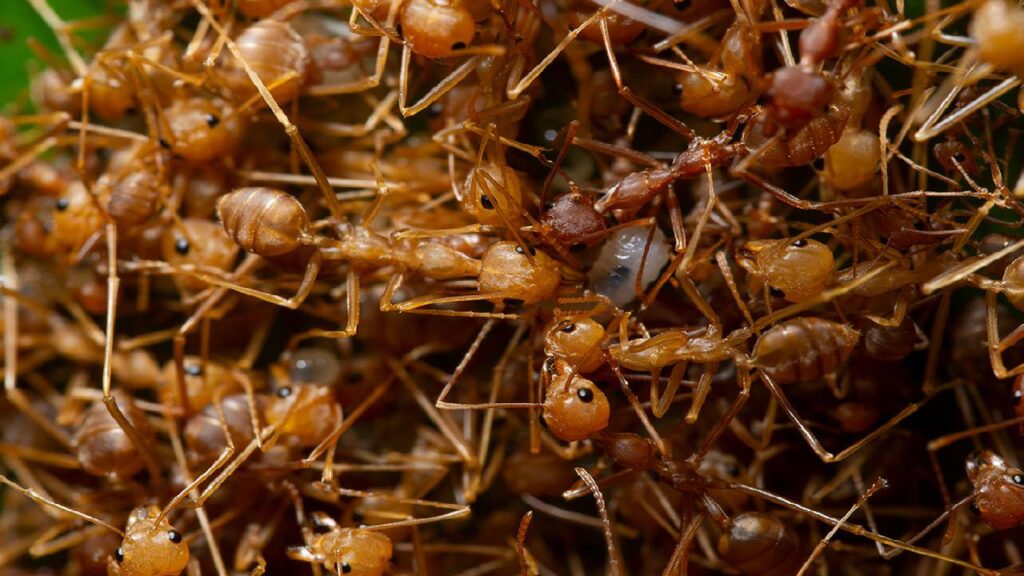How to Get Rid of Argentine Ants for Good: Say Goodbye to Infestations

Table of Contents
Do you experience Argentine ants thriving in your home? If yes, you may be worried. They are truly nasty and even dangerous creatures. They can cause huge risks to your belongings and your family’s health. So, we want you to learn more about Argentine ants and how to wipe them out of your home forever.
This guide is detailed and comprehensive, so you will find out everything that can help you deal with these unwanted guests. You may be interested in their habits and the signs they leave for you to detect infestations easily. The article also provides useful tips on both prevention and removal.
Getting your home ant-free may be a challenging task, but our professional advice will help you cope with it. Therefore, if you want to gain more Argentine ant control, continue reading this article
Key takeaway:
- Argentine ants are invasive and aggressive creatures that can cause damage to belongings and pose health risks to humans.
- Interconnected Super-Colonies are ruled by multiple queens and can reproduce quickly, outcompeting native ant species.
- Argentine ants have a complex social structure and use chemical signals for communication and coordination.
- It is important to address Argentine ant infestations due to potential damage, frustration, health risks, and environmental impacts.
- Signs of an Argentine ant infestation include ant trails, nesting sites, aphid populations, electrical issues, and the presence of other pests.
- Prevention measures include sealing entry points, maintaining cleanliness, proper garbage disposal, eliminating sources of moisture, and managing aphids.
- Non-toxic and DIY methods can be used for minor infestations, but severe infestations may require chemical treatments with caution.
What Are Argentine Ants?
The native habitat of these highly invasive insects is South Africa, namely Brazil, Argentina, and Uruguay. However, they can appear in any part of the world – from North America and Europe to Asia and Africa. So, don’t wonder if an Argentine ant colony has settled in your home.
The Argentine ant size is not too prominent – they are tiny creatures, less than 3 mm in length. They can be in light and dark brown colors. One colony can be connected with another and contain millions of insects with many queens and distinct subordination.
These ants are pretty adaptable and can be rather aggressive, so they are sure to out-compete native species in their struggle for resources. They eat almost everything – honeydew, other insects, and, of course, human food. They can also cultivate aphids to feed on their honeydew excretions.
These ants are unpleasant pests difficult to control. So, they are rather disastrous when invading homes and settling their colonies around. They cause to electrical systems and other household belongings.
The Argentine ant life cycle has four main stages:
- Egg – The queen lays tiny eggs in well-protected areas like cracks or debris.
- Larva – The eggs hatch within 2-3 weeks forming larvae. The larvae are protected and fed by working ants and increase in size. A mature larva spins a cocoon around itself to further develop into a pupa.
- Pupa – The pupal stage lasts for several weeks when they transform into an adult ant.
- Adults – These insects are then divided by their functions. Some go foraging, others feed larvae, and some become queens and are responsible for expanding colonies.
Even if one queen leads only one colony and reproduces offspring, separate colonies can be joined into a super-colony that can extend for miles.
Overview of Argentine Ant Behavior and How They Operate in Their Argentine Ants Supercolony

The ants are social insects that perform their functions in large colonies by using a complex system of communication based on chemical signals. They utilize pheromones to communicate with other ants and mark trails to food sources or inform about threats.
These insects are highly organized and very efficient with their division of labor. They can even recruit other ants to perform some specific tasks where assistance is needed.
The most outstanding feature of these insects is their ability to form a huge Argentine ants supercolony that is interconnected with others.
Such colonies can spread for miles. Every part of them is ruled by a separate Argentine ant queen. There may be many queens in such a super colony, so they reproduce very quickly and fight the native species effectively. That is why these insects are considered invasive species.
Explanation of the Impact Caused by Argentine Ants in Florida on Homes and Health
and different buildings. Due to the hot and dry weather, this area is ideal for these insects. They can cause a lot of problems, particularly in kitchens or areas where food is stored.
The main hazardous impact you can expect from these nuisance insects is their ability to ruin household electrical systems. They are attracted by warmth and build their nests near electrical components and wiring. That may cause short circuits and electrical fires.
We are often asked the question, “Do Argentine ants bite?” Yes, they do. Though their venom is not too dangerous, they may carry and spread harmful bacteria that cause foodborne illness. Their stings are also hazardous to those who are allergic.
The Argentine ants bite when you disturb their nests, and they can attack in large numbers. Therefore, you need to be very cautious while dealing with them during tidying your house.
Importance of Addressing Infestations of Argentine Ants
Therefore, you should not leave the Argentine ant infestation in your house unaddressed. There are several reasons to consider. They are the following:
- Potential damage to electrical systems and other household items.
- Significant frustration for homeowners.
- Creation of an uncomfortable and unsightly living environment.
- Argentine ant bite risks for people with allergies.
- Contaminating food sources and making them unsuitable for consumption.
- Negative impacts on the environment, leading to a decline in biodiversity.
- Spreading harmful bacteria that can cause foodborne illness.
That is why you have to think well about how to get rid of Argentine ants in house environments using a variety of methods and strategies. They may include baiting, chemical treatments, physical exclusion, and others. We will talk about them below.
Signs of an Argentine Ant Infestation
The first step towards getting rid of these awful insects is Argentine ant identification which can prove the infestation. You can do it by considering several signs which include the following:
- ant trails between their nests and food sources;
- individual ants or groups around your household;
- nesting sites that are usually found under rocks, in the soil, mulch, or leaf litter as small piles of dirt;
- growth of aphid populations and their activity on plants displayed in distorted leaves and honeydew secretions;
- electrical problems, like flickering lights or poorly working outlets.
- presence of other pests, like scale insects, mealybugs, and, surely, aphids.
If you have noticed these signs of an Argentina ant infestation, you have to take action immediately. If the problem looks severe, ask a pest control professional for help.
Common Areas Where Argentine Ants Are Likely to Nest and Forage
These insects may be difficult to detect because they nest and forage in extremely hidden environments. So, you need to know that they can be found in the following places:
- gardens and landscaped areas;
- in soil or mulch under or around your building;
- electrical systems;
- kitchens and pantries;
- compost boxes and trash bins;
- trees and shrubs where aphids can live.
If you experience difficulties in detecting and dealing with ants, you need to ask a professional Argentine ant killer for help.
Prevention of Argentine Ants in Texas and Other Areas from Entering the Home

Since an Argentine ant super colony can become an absolute disaster for your household in Texas where the development of huge super colonies is pretty common, it is better to take some preventive measures to avoid an invasion. Consider the following tips:
- Remember that these insects can enter your house via the tiniest holes and cracks, so sealing up any entry point is essential.
- Keep your home clean and free from crumbs, spills, and other food debris.
- The Argentine ants in Texas are usually attracted by big garbage bins if they are not sealed properly. So, dispose of your trash in sealed containers regularly.
- Check your home for any leaks or other sources of moisture in pipes, faucets, and other appliances.
- Minimize the chance of an infestation by trimming away all the vegetation growing close to your home.
- Get rid of aphids in your garden or home plants by removing them manually or applying a strong stream of water to wash them off.
If you suspect the presence of Argentina ants in your household anyway, consider the help of a pest control professional.
Removal Methods for Argentine Ants in California and Other Places
Of course, if you want to eliminate Argentine ants in California or in other places where you live, you may want to start with some non-toxic and DIY methods, especially if you have small kids or pets in your household. You may opt for the following things:
- vinegar solutions;
- diatomaceous earth (a powder made from the fossilized remains of aquatic organisms;
- borax Argentine ant bait;
- essential oils of tea tree, lemon, or peppermint;
- cinnamon powder;
- physical barriers like petroleum jelly or double-sided tape.
However, these methods can be effective only with a minor infestation. If you have to deal with a huge Argentine ant supercolony or persistent invasions, find a pest control professional.
How to Get Rid of Argentine Ants in House Environment with Chemicals
Severe infestations are difficult to treat. They may require chemical treatments and pesticides for the complete Argentine ant extermination. These methods can include the following:
- ant baits with a slow-acting toxicant;
- insecticidal dust;
- liquid insecticides;
- growth regulators applying in combination with other treatments.
You should follow the instructions on preparation labels carefully because all these products are very toxic and can cause health risks to your family.
Argentine Ant Elimination Methods Explained
Now that you have got the main tips on how to get rid of Argentine ants, you may be interested in how each of these methods works. Let’s explain this matter to you.
Ant baits contain some food and a slow-acting toxicant. When you place it in areas of the infestation, the insects carry it to their colony, and it spreads killing the population including the queen.
When you apply insecticidal dust, it contacts the ants’ bodies and kills them. Liquid insecticides kill the insects on contact and remain active for a certain period killing the other members of the population.
Growth regulators prevent ants from reaching maturity and reproducing. They interfere with the insects’ exoskeleton leading to their death.
If you wonder which method is better, it depends on your specific conditions. Therefore, working with a professional pest control specialist is more rewarding because they can determine the most effective course of action.
FAQ
YES, these ants can bite, but their venom is not toxic to humans. They are not aggressive and bite only for self-defense. Nevertheless, those people who are allergic can suffer from redness, swelling, and itching.
Scientists haven’t found any signs of the harmfulness of these ants’ bites and influences on humans. However, it is rather unpleasant when they invade your home in large numbers. In addition, they can spread harmful bacteria that cause intestinal illness and other health problems. These ants can also damage plants and eliminate native ant species. It breaks the stability of ecosystems, and it is one more reason why you need to get rid of them.
You can choose among natural remedies, DIY solutions, and chemical treatments to get rid of this nuisance infestation. Natural remedies include vinegar, essential oils, and other household substances. You can also think of a bait made of honey or sugar mixed with baking soda and even a solution of salt and water and cucumber peels or cinnamon sticks. If the infestation is very bad, chemical insecticides are recommended. They include imidacloprid, fipronil, and pyrethroids in sprays or baits.
These insects are omnivores, so they eat almost everything – sweet substances like sugar, nectar, honeydew, plant secretions, different kinds of fruits, and dead insects. They need a lot of protein, and animal carcasses are also a good source of it. Household foods like meat, cheese, and cakes can also attract these ants. That is why they feel well in a variety of environments, even in urban areas where many people live.
These ants are bad anyway when they invade homes and buildings. They spread bacteria, damage plants, and crops, and displace native ants and other insect species causing problems to biodiversity. Pathogens spread by these insects may harm plants and your pets. They reproduce very quickly and can be difficult to eliminate. Even if they do not pose a direct threat to people, they are an absolute disaster, and you should get rid of them.

